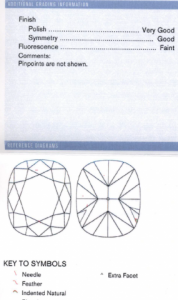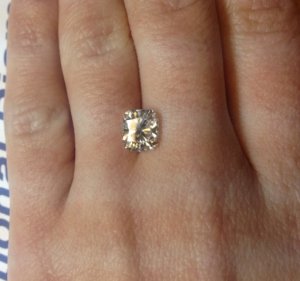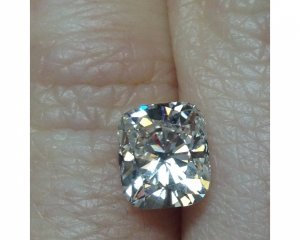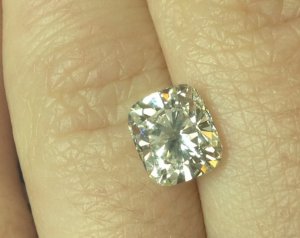HoratioNelson
Rough_Rock
- Joined
- Apr 11, 2013
- Messages
- 84
I have been looking for the most perfect cushion cut diamond I can find over the last few months, and have found some great gems, but nothing quite perfect.
I was wondering if anyone had thoughts on this particular stone and the way it is cut.
In person, it looks lovely (it's a GIA G VS1 1.64ct), with a good spread and dimensions. 7.45 x 6.47; talbe 60% depth 68.6%. I've attached a picture below.
Now, there's only one very small thing putting me off. I've attached a picture from the certificate - you can see on the right hand drawing in the plan that there are a couple of extra facets in the bottom left and bottom right corners, to the point that it makes the stone unsymmetrical horizontally as well as vertically. Is it noticeable from the photo of the stone itself? Probably not. And I don't think anyone who looks at the stone once mounted will ever know.
But would you avoid a stone like this? We're also quite keen on it because it looks more firey than most of the "crushed ice" modidied brilliants.
Would be great to hear peoples' thoughts as to how significant the extra facets are.
Thanks


I was wondering if anyone had thoughts on this particular stone and the way it is cut.
In person, it looks lovely (it's a GIA G VS1 1.64ct), with a good spread and dimensions. 7.45 x 6.47; talbe 60% depth 68.6%. I've attached a picture below.
Now, there's only one very small thing putting me off. I've attached a picture from the certificate - you can see on the right hand drawing in the plan that there are a couple of extra facets in the bottom left and bottom right corners, to the point that it makes the stone unsymmetrical horizontally as well as vertically. Is it noticeable from the photo of the stone itself? Probably not. And I don't think anyone who looks at the stone once mounted will ever know.
But would you avoid a stone like this? We're also quite keen on it because it looks more firey than most of the "crushed ice" modidied brilliants.
Would be great to hear peoples' thoughts as to how significant the extra facets are.
Thanks












300x240.png)